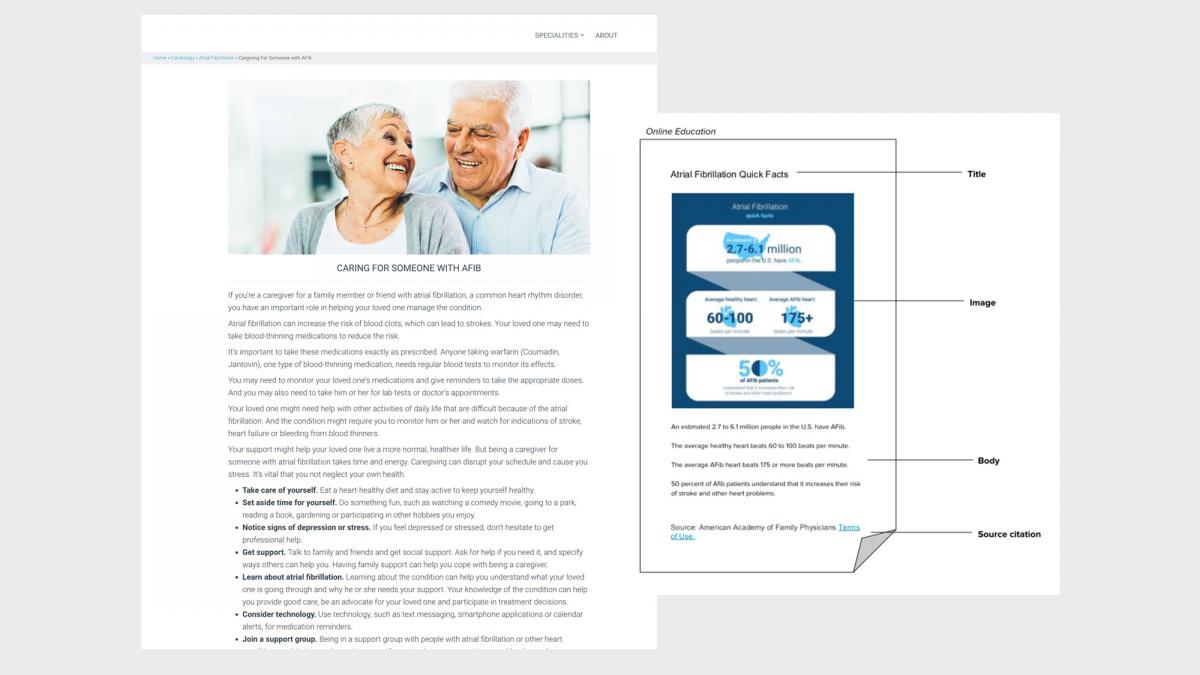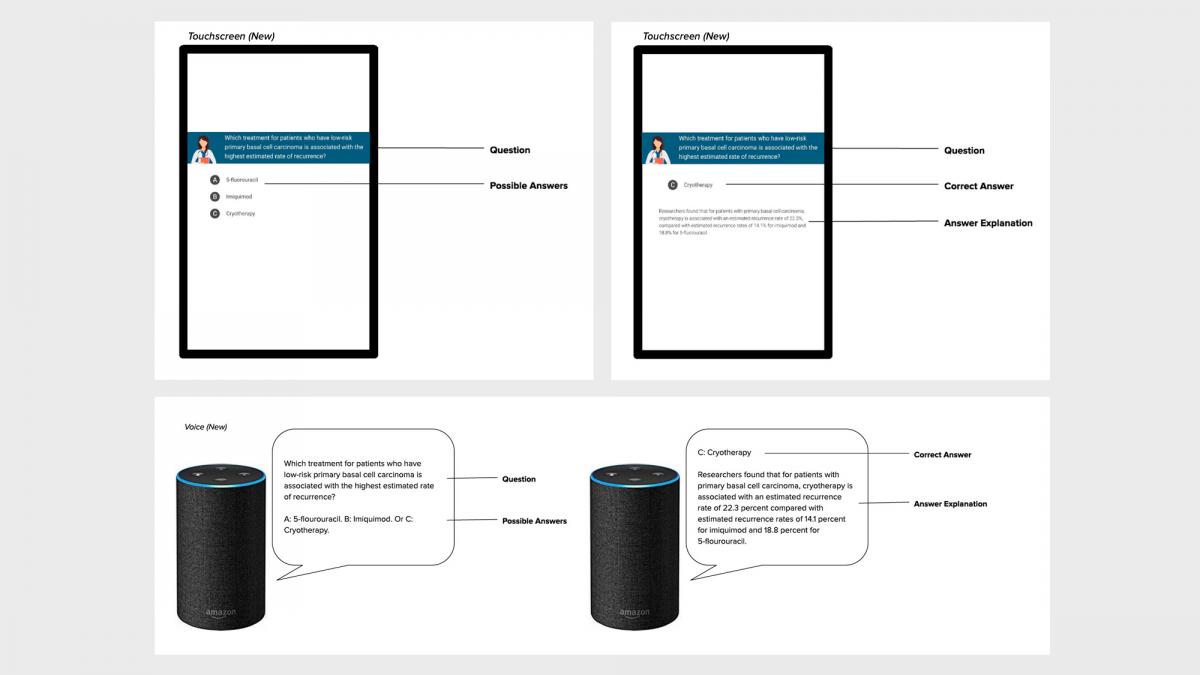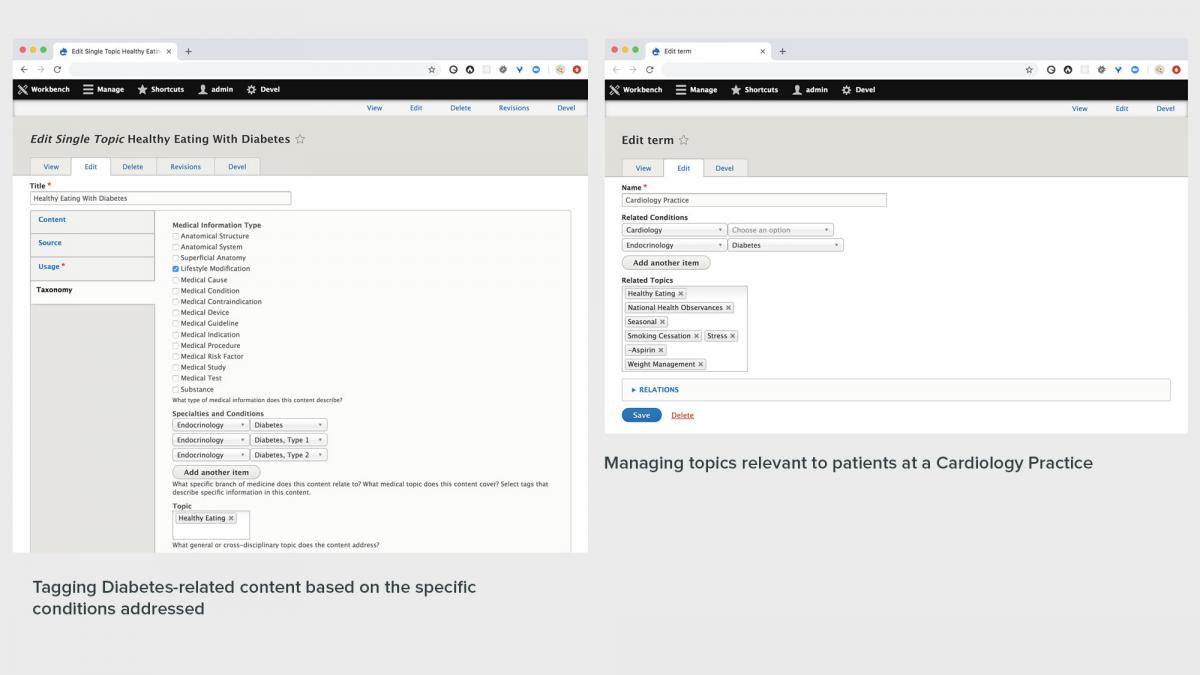Leading Patient Engagement Solutions Company
Content modeling as a practical foundation for future scalability
Palantir recently partnered with a patient engagement solutions company that specializes in delivering patient and physician education to deliver improved health outcomes and an enhanced patient experience. They have an extensive library of patient education content that they use to build education playlists which are delivered to more than 51,000 physician offices, 1,000 hospitals, and 140,000 healthcare providers - and they are still growing.
The company is in the process of completely overhauling their technical stack so that they can rapidly scale up the number of products they use to deliver their patient education library. Currently, every piece of content needs to be entered separately for each product it can be delivered on, which forces the content teams to work in silos. In addition, because they use a dozen different taxonomies and doing so correctly requires a high level of context and nuance, any tagging of content can only be done at the manager level or above. The company partnered with Palantir.net to remove these bottlenecks and plan for future scalability.
Key Outcome
Palantir teamed up with this patient engagement solutions company to develop a master content model that:
- Captures key content types and their relationships
- Creates a standardized structure for content, including fields that enable serving content variations based on end-point devices and localization
- Incorporates a taxonomy that enables content admins to quickly filter and select content relevant to their needs and device
Enabling Scalable Growth
The company’s content library is only getting larger over time, so the core need driving the master content model is to enable scalable growth. Specifically, that means a future state where:
- New products can be added and old products deprecated without restructuring content.
- Content filtering can scale up for new product capabilities, languages, and specialties without having to be fundamentally reworked.
- Clients using the taxonomy find it intuitive and require minimal specific training to create and amend their own patient education playlists.
These principles guided our recommendations for the content model and taxonomy.

Content Model
Our client’s content model is currently organized by the end product that content is delivered through - for example, a waiting room screen vs. an interactive exam room touchscreen. This approach requires the digital team to enter the same piece of content multiple times.
To streamline this process for the team, we recommended a master content model that is organized by the purpose of the content, including the mindset of the audience and the high-level strategy for delivering value with that content.
For example, a “highlight” is a small piece of content intended to engage the audience and draw them into deeper exploration, while a “quiz” is a test of knowledge of a particular topic as training or entertainment.

This approach allows the company to separate the content types from products, which in turn makes them easier to scale. For example, this wireframe shows how a single piece of quiz content can be delivered on a range of endpoint devices depending on which fields that device uses. This approach allows us to show how a quiz might be delivered on a voice device, which is a product the company does not yet support, but could in the future.
“Our content is tailored to different audiences with different endpoints. Palantir took the initiative to not only learn about all of our content paths, but to also learn how our content managers interact with it on a daily basis. We’ve relied heavily on their expertise, especially for taxonomy, and they delivered.”
Taxonomy
The company’s taxonomy has 12 separate vocabularies, and using them to construct meaningful content playlists requires a deep understanding of both the content and the audience. Existing content has been tagged based on both the information it contains and based on the patients to whom it would be relevant.
For example, a significant proportion of cardiology patients are affected by diabetes, so a piece of content titled "Healthy Eating with Diabetes" would be tagged with both "Diabetes" and "Cardiology". Additionally, many tags have subtle differences in how they are used — when do you use "cardiology" vs. "cardiovascular conditions"? "OB/GYN" vs. "Women's Health"?
This system requires that everyone managing the content — from content creators to healthcare providers and staff selecting content to appear in their medical practice — understand the full set of terms and the nuance of how they are applied in order to tag content consistently.
Our goal was to develop a taxonomy that can be used to filter content effectively without requiring deep platform-specific context and nuance.
Our guiding principles were to:
- Tag based on the information in the content.
- Use terms that are meaningful to a general audience.
- Use combinations of tags to provide granularity.
- Avoid duplicate information that is available as properties of the content

We ultimately recommended a set of eight vocabularies. Two of them are based on company-specific business processes, and the remaining six are standards-based so that any practitioner can use them. By using combinations of terms, users can create playlists that are balanced in terms of educational and editorial content.
For example, in our recommended taxonomy, relevant content is tagged as referencing diabetes, so that the person building the playlist can still construct effective content playlists, without needing to carry in their head the nuance that many cardiology patients are also diabetic.
Moving Forward With Next Steps
This content modeling engagement spanned 9 weeks, and the Palantir team delivered:
- A high-level content model identifying the core content types and their relationships
- A set of global content fields that all content types in the model should have
- A field level content model for the four most important content types
- A new taxonomy approach based on internal user testing
- A Drupal Demo code base showing how the content types and taxonomy can be built in Drupal 8
Photo by National Cancer Institute on Unsplash
In the future, the company’s ultimate goal for the platform is to scale their engagement offerings with new content and new technology. With our purpose-driven content model and refined taxonomy, the company can scale their business by breaking down internal content silos and making tagging and filtering content consistent and predictable for their internal team and eventually, their customers. Palantir’s master content modeling work forms a practical foundation for the company’s radical re-platforming work.
